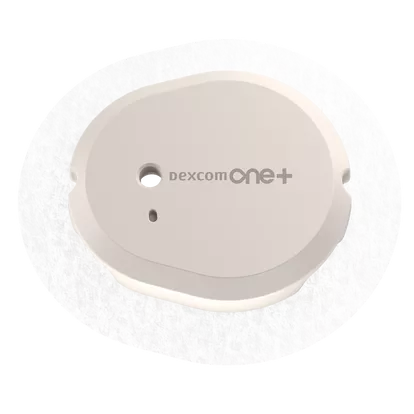Tonic-clonic seizures, formerly known as “grand mal” seizures, are a type of generalized seizure affecting both sides of the brain. They manifest in two phases—the tonic phase, where muscles stiffen, and the clonic phase, characterized by rhythmic muscle jerking. These seizures can result in unconsciousness and are often linked to conditions like epilepsy. This segment of the healthcare industry has been seeing increased activity, particularly in terms of research, new treatment options, and broader patient accessibility to care.
The tonic-clonic seizures treatment market is set to grow at a CAGR of 6% during the forecast period of 2024-2032, thanks to advancements in research, clinical trials, and the introduction of new generic treatment options.
Market Overview
Market Growth Rate
The tonic-clonic seizures treatment market is projected to grow at a compound annual growth rate (CAGR) of 6% during 2024-2032. This steady growth is driven by multiple factors, including the increasing prevalence of epilepsy and other neurological conditions worldwide, which leads to more patients requiring long-term care.
Global Burden of Epilepsy
Epilepsy, one of the primary causes of tonic-clonic seizures, affects over 50 million people globally. With cases expected to rise due to factors such as aging populations and improved diagnosis rates, the demand for better treatments is intensifying. Emerging markets, particularly in regions with underserved healthcare infrastructure, are seeing increased efforts to diagnose and treat epilepsy early, further contributing to the market’s expansion.
Key Market Drivers
1. Increased Research Activities and Clinical Trials
The market’s growth is largely propelled by ongoing research and clinical trials focused on developing new treatments. This research is aimed at both better understanding the causes of tonic-clonic seizures and developing more effective medications with fewer side effects.
Pharmaceutical companies and academic institutions are investing in studies to identify novel therapeutic targets, which could pave the way for innovative treatments. Moreover, advancements in precision medicine and pharmacogenomics (the study of how genes affect a person’s response to drugs) have the potential to make treatments for tonic-clonic seizures more personalized and effective.
Clinical Trials Overview: Many of the top players in the market are conducting clinical trials for new formulations of anti-seizure medications (ASMs). These trials focus not only on improving the efficacy of existing drugs but also on discovering breakthrough therapies that offer long-term seizure control.
2. Introduction of Generic Treatment Options
Another critical factor driving the market growth is the increased availability of generic treatment options. As patents expire on several key anti-seizure medications, generic alternatives are emerging, providing patients with more affordable treatment options. This shift is particularly impactful in low-income and developing nations where cost barriers to epilepsy treatments have traditionally been high.
Generics offer the same efficacy as branded drugs but at significantly reduced costs, making treatment accessible to a broader segment of the population. This democratization of healthcare is a key driver of the market’s continued expansion, especially in regions where out-of-pocket healthcare expenditures are common.
Get a Free Sample Report with Table of Contents
Competitive Landscape
GSK Group
GlaxoSmithKline (GSK) has been a long-standing player in the neurology and epilepsy treatment markets. With a portfolio of medications that address various types of seizures, GSK is positioned as a leader in the tonic-clonic seizures treatment space. The company is actively involved in the development of next-generation treatments aimed at improving the quality of life for patients with epilepsy.
GSK’s focus is not just on medications but also on patient education and accessibility. The company is working on several initiatives to ensure that patients, particularly in developing regions, have access to affordable and effective treatments for tonic-clonic seizures.
Eisai Co. Ltd.
Eisai Co. Ltd. is a major player in the global epilepsy treatment market, known for its work in central nervous system disorders. The company’s anti-epileptic drug (AED) portfolio includes therapies specifically designed for treating tonic-clonic seizures. Eisai’s research has focused on understanding the root causes of epilepsy to develop more targeted treatments.
Eisai’s medications are widely used across the globe, and the company continues to invest in clinical trials aimed at extending the range of treatment options for seizure disorders. They are also exploring the use of combination therapies that offer better control over seizure activity while minimizing adverse effects.
Catalyst Pharmaceutical Co. Ltd.
Catalyst Pharmaceuticals is an emerging force in the epilepsy market, with a growing focus on rare forms of epilepsy and seizure disorders. The company has made significant strides in developing novel therapies that could offer new hope to patients with drug-resistant seizures, including tonic-clonic types.
Catalyst is known for its commitment to patient advocacy and works closely with healthcare professionals to ensure its treatments are both effective and accessible. As the market for tonic-clonic seizure treatments expands, Catalyst is poised to become a major player by providing innovative solutions that meet unmet medical needs.
Market Segmentation
By Treatment Type
The tonic-clonic seizures treatment market is segmented by drug type into:
- First-line Anti-Seizure Medications (ASMs): This includes drugs like levetiracetam, lamotrigine, and valproate, which are commonly prescribed for controlling tonic-clonic seizures.
- Second-line Medications: For patients who do not respond to first-line treatments, drugs like topiramate and zonisamide are used. These medications are often part of combination therapy to achieve better seizure control.
- Generic Drugs: As previously mentioned, the growing availability of generics is making treatment more affordable for a larger segment of the population.
By Route of Administration
- Oral Medications: Oral ASMs remain the most common form of treatment for tonic-clonic seizures. These drugs can be administered in various forms, including tablets, capsules, and liquids.
- Injectable Medications: Injectable treatments are often used in acute settings, such as in hospitals, where rapid seizure control is required.
By Region
- North America: The region holds a significant share of the tonic-clonic seizures treatment market, driven by the high prevalence of epilepsy and strong healthcare infrastructure. The U.S. leads in terms of market size, largely due to advanced research and development capabilities.
- Europe: Europe also represents a substantial market, particularly in countries like the U.K., Germany, and France. The region benefits from a well-developed healthcare system and high awareness levels about epilepsy treatments.
- Asia-Pacific: This region is expected to witness the fastest growth during the forecast period, fueled by increasing healthcare investments, improved diagnosis rates, and the rising availability of generic medications.
Future Trends
1. Precision Medicine and Personalized Treatments
One of the most exciting developments in the field is the rise of precision medicine. By analyzing a patient’s genetic makeup, healthcare providers can tailor treatments that are more likely to be effective and have fewer side effects. This approach is particularly promising for patients with drug-resistant tonic-clonic seizures, who often require more personalized care.
2. Technological Advancements in Seizure Detection and Monitoring
Innovations in wearable devices and seizure detection technologies are providing new tools for both patients and healthcare providers. These technologies allow for real-time monitoring of seizure activity, offering critical insights that can be used to adjust treatment plans more effectively.
3. New Drug Approvals
In the coming years, we can expect to see the approval of new drugs that offer improved seizure control with fewer side effects. Many of these drugs are currently in clinical trials, and their success could significantly impact the market.






